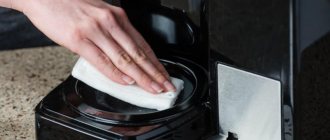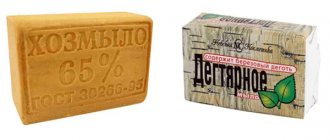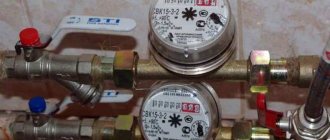Such positive phenomena as repair or construction of roads have a negative side. It involves particles of resin from the new road surface getting onto the vehicle body. Such contaminants are difficult to wipe off from the paint surface. To remove bitumen from a car body, you will have to use reliable and proven special tools.
Methods for removing bitumen from a car body.
How do tar particles settle on cars?
Bitumen stains most often appear after driving along a repaired section of the highway on a hot summer day. At this time, the dark resin actually turns into liquid under the influence of high temperature and friction from the wheels. On the body, each drop cools down and forms a crust, tightly adhering to the car paintwork. Also, particles fly off from the wheels under centrifugal action on neighboring cars. The higher the speed of travel along the updated highway, the farther the drops fly and the more reliably they are fixed to the surface.
Important! The chemical composition of bitumen includes aggressive organic solvents that can react with layers of car paint, damaging the body protection and worsening its appearance.
The main material, which is bitumen or tar, does not have a significant chemical effect on the surface. It only traps dirt particles, abrasive sand, other harmful components and moisture on it, which contribute to the destruction of the surface layer of the body. The following areas are at risk:
- bumpers;
- wheel arches;
- bottom of doors;
- thresholds.
Experts recommend not to delay removing unwanted plaque.
Professional compositions
When thinking about how to wash bitumen from a car, vehicle owners often choose professional solutions . Such liquids contain special additives and petroleum fractions; they can remove stubborn dirt. Despite their unique composition, such products have one serious drawback. The fact is that they are very aggressive.
Active additives can easily damage the paint and varnish on the body surface. Especially if the driver encountered a similar problem for the first time. If you have not previously removed resin with professional compounds, then it is better to seek help from experienced specialists.
Options for preventing bitumen contamination
By adhering to certain rules, it is possible to minimize negative factors or completely avoid them. The methods are relevant for cars of any type and are available to drivers with any experience:
- slow ride;
- maintaining distance;
- application of protective coating;
- preliminary installation of mudguards.
The preferred speed limit on newly repaired road surfaces should not exceed 30-50 km/h. The higher the ambient temperature, the lower the speed should be. The driver must maintain a sufficient distance from the vehicle ahead. You should not get close to trucks, as the large diameter of their wheels can cause drops to even land on the windshield. Pre-installed mud flaps also help protect the car. They will not allow any type of dirt to fly away. Pre-applied various protective layers help block the interaction of the aggressive resin composition. These include, for example, solid polymer compositions or a layer of liquid glass. To clean the latter from bitumen spots, ordinary fiber cloth is enough.
Road reagents. What you shouldn't be afraid of, but should be wary of
During the cold season, cars simply bathe in a variety of chemicals. The roads are watered with reagents, sprinkled with sand and salt, and “anti-freeze” is poured from the washer nozzles. And this cocktail ends up on the paintwork. The most dangerous component of the mixture is road reagents. They usually leave yellow stains on paintwork. They are washed during everyday washing. Particularly stubborn stain fragments can be removed with bitumen cleaners.
Rumors about the destructive properties of road reagents are in fact greatly exaggerated. Road chemicals “love” to penetrate into damage to paintwork; it actively interacts with bare metal. So, before the start of the winter season, it is extremely important to repair all chips in the paintwork and treat the car with a protective composition such as “liquid glass”.
Myth. Car manufacturers know the problem of road reagents, so modern cars are immune to them. There is no need to protect the car with coatings.
Is it true. This would be true if all countries used the same reagent for decades. Unfortunately, up to 6 types of reagents are used on the roads of Moscow alone. Almost every year a new “chemistry” is introduced, which means that the machines were definitely not specially prepared for this “new”. Therefore, on the eve of the winter season, it is customary to apply protective coatings to expensive cars. They absorb the impact of the reagents, prevent the formation of an ice crust, and repel water and dirt. In general, they preserve paintwork and save the owner’s money.
How long can you drive with contaminants?
It is necessary to get rid of formed stains as quickly as possible. It would be ideal to wash off the resin from the car yourself after driving through the problem area. For such cases, there should be rags and a container with high-quality solvent in the trunk. If you ignore the plaque, damage to the paintwork will soon appear. Over time, the black growths harden completely, which creates problems when removing them, and leaves reddish spots underneath. Newly formed spots of bitumen can be easily washed off without leaving any traces.
Metal dust. Rust that washes off
Owners of light-colored cars may experience a slight shock when they discover traces of rust appearing on the exterior of the paintwork. Is it really time to sell the car?! Before you panic, try washing off the rust. Often the appearance of “spiders” is caused by pieces of metal soldered into the paintwork. This is usually metal chips that fly from the brake pads. It is hot and, when it gets on the varnish, it instantly sticks to the surface. Then, under the influence of moisture, the metal dust oxidizes, and rust spots appear on the paintwork.
This is the very case when you need to use only special tools. Both Liqui Moly and KochChemie have good cleaners for removing block dust.
Myth. Metal chips from the pads are harmless. It can be washed with ordinary detergents at the cottage or at a self-service car wash.
Is it true. The dangers of metal dust should not be downplayed. It is soldered into the varnish and leaves microcraters on it. It cannot be scrubbed, as metal particles will scratch the varnish. Places where metal dust is localized should be treated with a special agent that will dissolve the metal. The ideal way to solve the problem is to wash the car at a detailer from time to time, so that specialists wash not only the body, but also the wheel rims, which are covered with metal coating from the pads, with a special composition. If this is not done, the discs will quickly lose their appearance - they will look old and rusty.
Methods for removing bitumen
To remove bitumen and not damage the paintwork, many drivers go to service stations, where they probably know how to wash it off the car. However, you will have to pay about 3 thousand rubles for the services. In this case, you can wipe off the marks yourself by purchasing a special product in advance that costs 200-600 rubles. You will have to wait several hours for your car to be cleaned, including waiting in line. If the marks appeared recently and did not have time to penetrate deeply into the paint, then it is worth carrying out the operation yourself in a garage. You will be able to save both money and time. Most effective special products are offered by manufacturers in aerosol form. The spray bottle does not have a strong odor and is easy to use. Universal and professional cleaners are presented in this form. Universal products are based on the best surfactants and alcohol. They are safe to use even on their own, and no pre-washing is required before cleaning the surface. They are relevant when removing bitumen from the body in camping conditions, when dirt has recently formed.
It is better to use a more expensive product from a trusted brand, for example, Liqui Moly Teerentferner, HI-GEAR aerosol or Greenotex Turbo Force Cleaner concentrate, than a more budget option like Lesta. Otherwise, the body will not be properly cleaned, and old residues will continue to corrode the surface. In problematic cases, you will need professional products, but you must work with them carefully, since most solutions are concentrated, flammable and have a specific aroma. Difficulties in application are compensated by maximum efficiency. Old stains are removed just as completely as newly formed ones.
Lime. White spots that can't be washed off
Ceilings in parking lots are usually whitened with lime. It protects floors from fungi and mold. But when water flows from above through the ceilings onto the cars, lime flows along with it. And she is famous for her causticity. Whitish spots usually appear after the stains have dried. If the lime is removed immediately, it will not have time to cause significant harm. But there are cars that don’t leave the parking lot for weeks. And if lime is spilled on such a vehicle, serious risks arise. On cars with hard varnish, lime leaves stains that can be removed by polishing. On cars with thin soft varnish, complete destruction or peeling of the varnish layer may occur. In this case, defects are removed by painting.
Lime stains should not be rubbed as they contain abrasive particles. But they can be dissolved using a liquid descaler or household limescale cleaner. They are applied using a sprayer. But they must be used extremely carefully so as not to dissolve the varnish along with the lime.
Myth. You can remove lime stains yourself with a solution of citric acid or vinegar.
Is it true. It’s better not to take risks, because trying to remove stains on your own complicates the work of specialists who will ultimately have to bring this matter to a happy ending. Yes, acidic compounds are used to remove lime, but these are special substances that need to be used skillfully and competently. In addition, very often, after removing the lime, whitish spots still remain on the varnish, but this is no longer dirt, but matted areas with damaged varnish. They need to be polished. In cases of catastrophic bad luck, lime damage has to be painted over.
If there are lime stains on your car and you don’t have anything at hand to wash it off, use regular lemon juice or vinegar. Using a spray bottle will speed up the process.
Alternative new products
The market for effective chemicals has been replenished with new materials. One of them is an auto scrub, which is a rubberized structure made in the form of a circle, napkin or mitten. With the help of the product it is possible to fight not only bitumen, but also other problems, including traces of midges. A new product on the car market is synthetic clay. The structure of the substance is a viscous texture, reminiscent of children's plasticine. The composition penetrates the bitumen, enters into a chemical reaction and removes build-up along with third-party adhering inclusions (dust, dirt, sand, etc.). The impact of the composition does not affect the paintwork.
How to remove bitumen stains on a car with specialized products
If the available means could not cope with the problem of removing tar from the car body, you should turn your attention to professional cleaning products. They are highly effective and easily cope with both fresh and old bitumen stains. Among these drugs are:
- A variety of professional cleaners (Grass, Kangaroo, Liqui Moly, Pingo, Sonax). Most of these products are available in aerosol form, which makes working with them as convenient as possible; some require a certain amount of time after application to a bitumen-contaminated surface, others do not. With their help, you can quite easily and quickly wipe off bitumen from the car. When choosing a specific cleaner, you should focus on the average price category and country of manufacture;
- Car scrubs are one of the latest inventions in the field of car care. They are produced in the form of rubberized material in the shape of a circle, napkin or mitten. Such products are distinguished by their ease of use and effectiveness in removing various types of contaminants from the car body;
- Synthetic clay is also one of the new developments. The big advantage of this product is its very effective and at the same time gentle removal of tar from the surface of the machine. In appearance, clay is a bit like plasticine; it penetrates the structure of bitumen, envelops and removes it.
Important! When working with all these products, you must strictly follow the instructions for their use indicated on the packaging of the product.
The use of traditional methods of body cleaning
Before washing off bitumen stains with expensive means, you can use traditional methods tested by experienced motorists. They are often used to wash off road debris from inexpensive cars. Popular substances that help wash off bitumen are:
- White Spirit;
- solvents (647, 646, etc.);
- kerosene (diesel fuel, gasoline);
- acetone-containing products.
White spirit is a relatively safe substance for household use. It is produced through the process of petroleum distillation. They should be washed carefully so as not to damage the paint. Unlike conventional solvents, which help only on fresh stains, it is able to scrub off slightly dried stains. Due to the availability of gasoline, kerosene and diesel fuel, products are widely used to remove plaque. It is possible to get rid of even old dirt. We recommend working with protective gloves and a petal. The operation is carried out in several stages so as not to damage the varnish on the car. If no other means are available, you can use nail polish remover or strong alcoholic drink. Such compositions cope only with fresh contaminants.
Insects. Evil is in their blood
Insects are such a nasty thing. If in the city they are annoying, then outside the city they simply harass motorists. A cloud of midges instantly deprives the driver of his vision, and at high speed such a “surprise” is a direct road to an accident. Water and wipers cannot cope with the mess of broken insects. It can be done quickly only with the use of special detergents. And if insects break on a hot hood, then a new risk arises: the mush quickly combines with the softened varnish, and along with it, hard inclusions - chitin and dirt - penetrate into the paint.
Coca-Cola has proven itself to be a great cleaner. It is also suitable for removing insects from the hood and windshield. The part that needs to be washed is first washed with water to wash away debris. At the second stage, the surface is moistened with a drink. Give it a little time to work and rinse off with plenty of water.
Insects need to be removed using special means and as often as possible so that the caustic porridge does not have time to penetrate the varnish. If a car with insects sits in the hot sun for several days, you cannot clean it yourself, because there is a risk of damage to the paintwork. The right decision is to take the car to a detailer. There it will be washed using a special shampoo, and damage, if any, will be polished.
Myth. Regular dish detergent and a dish sponge will wash insects off the hood in one go!
Is it true. If at the moment of contact with the insect the surface was cold, and the traces are washed off immediately - fresh, then yes: no consequences will happen and “Fairy” will cope. But if the insects accumulated on the already hot hood, and even “fried” in the sun in a traffic jam, then you need to go to the car wash without delay. Before washing, all flip flops should be treated with special insect removers. And be sure to read the instructions!
How to protect your car from insects?
The most troublesome way: clean the LPK every day using special cleaners. However, even with this approach, the safety of the varnish is not guaranteed. A more reliable option: cover the body with a protective compound or films.
Bird droppings. Extreme causticity
Drivers know how dangerous bird excrement is, so they try to remove it from paintwork immediately. Problems begin if droppings fall on a car, which, for example, has been standing idle for a long time. If the droppings are not washed off immediately, they will corrode the varnish, penetrate the base coat of paint, and even oxidize the metal. Therefore, if such dirt is detected, you should immediately pour cola on it and wipe it off with at least a damp cloth, or better yet, wash it off with plain water or a handy detergent. If marks appear on the varnish, do not try to clean them off. It’s better to show them to a specialist so that he can tell you how best to remove them. Most often, defects from droppings are removed by polishing.
There are many special means to combat bird droppings. If the car comes under a powerful bird attack, urgent measures need to be taken. From available means, you can use the same Coca-Cola or a similar drink. If you have dishwashing detergent, you can use that too. The faster the droppings are washed away, the less harm it will cause.
If bird droppings are not removed immediately, then these ugly marks may remain in its place. Defects of this depth can only be removed by painting.
What not to use
When removing bitumen stains from clothes, there are a number of methods, the use of which will not lead to the expected result, and in some cases may even ruin the item.
First of all, we must remember that bitumen is not a water-soluble substance, so water alone cannot remove the stain. Washing can help, especially with fresh stains, but always use detergent or oxygen stain remover.
Strong solvents such as acetone should not be used on delicate fabrics or synthetics. The product can corrode the fibers, rendering the item unusable. If, however, the solvent is used as a last resort, you must first try it on an inconspicuous area from the inside out. You should act extremely carefully, trying to apply only to the stain, without getting it on the surrounding fabric.
There is a high risk of damaging soiled clothing if you simply try to tear off dried bitumen.
The only thing you can do is cut off the crust with a sharp knife or razor blade without touching the fabric.











